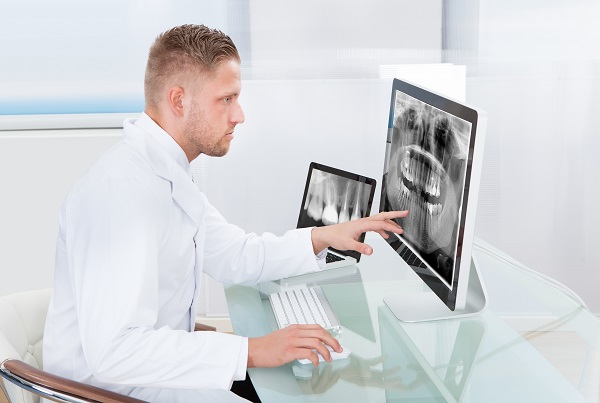Diagnosing Dental Issues With Teledentistry Visits

Teledentistry is the use of technology to provide treatment to patients that are in a different geographical area than their dentist. Dentists use communication technologies, like video conferencing, to engage with patients and other dentists. They use data communications to share medical imaging results when they need to consult with specialists or their fellows. There is a wide variety of technologies that allow dental practices to beat the limitations of distance.
The point of teledentistry is to provide care to patients that are unable to access a particular dental service in person. Here are a few more reasons why teledentistry is gaining popularity.
The case for teledentistry
Though technology and its applications are advancing in leaps and bounds, there is still something to be said for person-to-person contact. It could be the familiar barista at the coffee shop around the corner, or the postman that has delivered mail in the same neighborhood for years.
No sector is more reliant on the personal touch than a dentist and their patient. However, teledentistry and telemedicine become an option when:
- A dental practice wants to reach patients who are unable to physically go in for a dental checkup
- A dentist needs to consult with a colleague or specialist in a different geographical location
- The social distancing rules necessitated by COVID-19 require dental practices to screen patients to determine if they need urgent dental care
These scenarios make the use of technology a necessity. Teledentistry allows dental practitioners to offer care to their patients while getting around the drawbacks of geography, mobility or a pandemic. This is how dentists are using teledentistry to diagnose dental issues:
The use of teledentistry for diagnosis and treatment planning
Teledentistry allows dental health practitioners to use an information-based approach to carry out the following tasks remotely:
- Check for superficial signs of tooth decay, cavities, injury and other visible oral health problems
- Order and schedule medical imaging tests for patients who need it
- Receive and evaluate electronic versions of medical tests to form a course of action
- Share the medical imaging results with a consulting dentist
- Implement a treatment plan that may involve scheduling physical dental visits for the patient
The list above assumes that the patient has an oral health problem that requires a dental procedure. The good news is that a good number of cases that dentists receive are routine dental checks and monitoring for long-term dental treatment. In such cases, the dentist will simply schedule a follow-up appointment or prescribe medication or at-home treatment.
How teledentistry works
There are two aspects to teledentistry: Patient-to-dentist and dentist-to-dentist. In patient-to-dentist, a dental practice will set up a video call between their dentist and patient. The practice may send a dental assistant to the patient’s location to help with the physical exam.
Using the information collected during the video call, the dentist will decide the next course of action. They may arrange for the patient to get in-person dental care or arrange for medical imaging tests. In some cases, the dentist may use dentist-to-dentist telemedicine to share their patient’s information while consulting with a specialist.
In less involved scenarios, the dentist will give their patient a clean bill of health, write a prescription or set up a follow-up appointment.
We can get dental care to you, wherever you are
Thanks to teledentistry, you do not have to sit in a dentist’s office waiting your turn. Our practice is here for you, right at the other end of the line, waiting to help.
Our teledentistry solutions will make available the timely and holistic treatment you need to get back to your life without that nagging ache. Contact us to find out how we can help you today.
Request an appointment here: https://dragonflydentalportcharlotte.com or call Dragonfly Dental of Port Charlotte at (941) 676-9225 for an appointment in our Port Charlotte office.
Check out what others are saying about our services on Google: Read our Google reviews.
Related Posts
Composite fillings are a common treatment for filling cavities and addressing tooth decay. These treatments often use tooth-colored, durable materials that can last for several years, but only if the filling is taken care of properly. It is important to avoid eating certain foods after getting a filling in order to protect the procedure and…
If you have cavities caused by tooth decay, composite fillings can be used to fill the hole, protect your teeth, and restore your smile. Many people prefer this option because it has a more natural appearance and does not create an eyesore. Others prefer them because they do not contain the same ingredients as traditional…
Cavities can happen to anyone, but there are ways to restore your teeth without sacrificing your appearance. Tooth colored fillings allow patients to receive the necessary repairs without the use of unattractive metals. Many cosmetic dentists now use this approach for most patients, allowing them to restore tooth form and function while maintaining the smile's…
In the past, unsightly metal fillings were used to treat cavities. Today, more patients prefer composite fillings, which serve the same purpose but with more natural-looking results. Dental fillings are relatively straightforward and do not require too much aftercare. However, there are ways to help reduce discomfort, prevent damage and prolong the life of composite…
